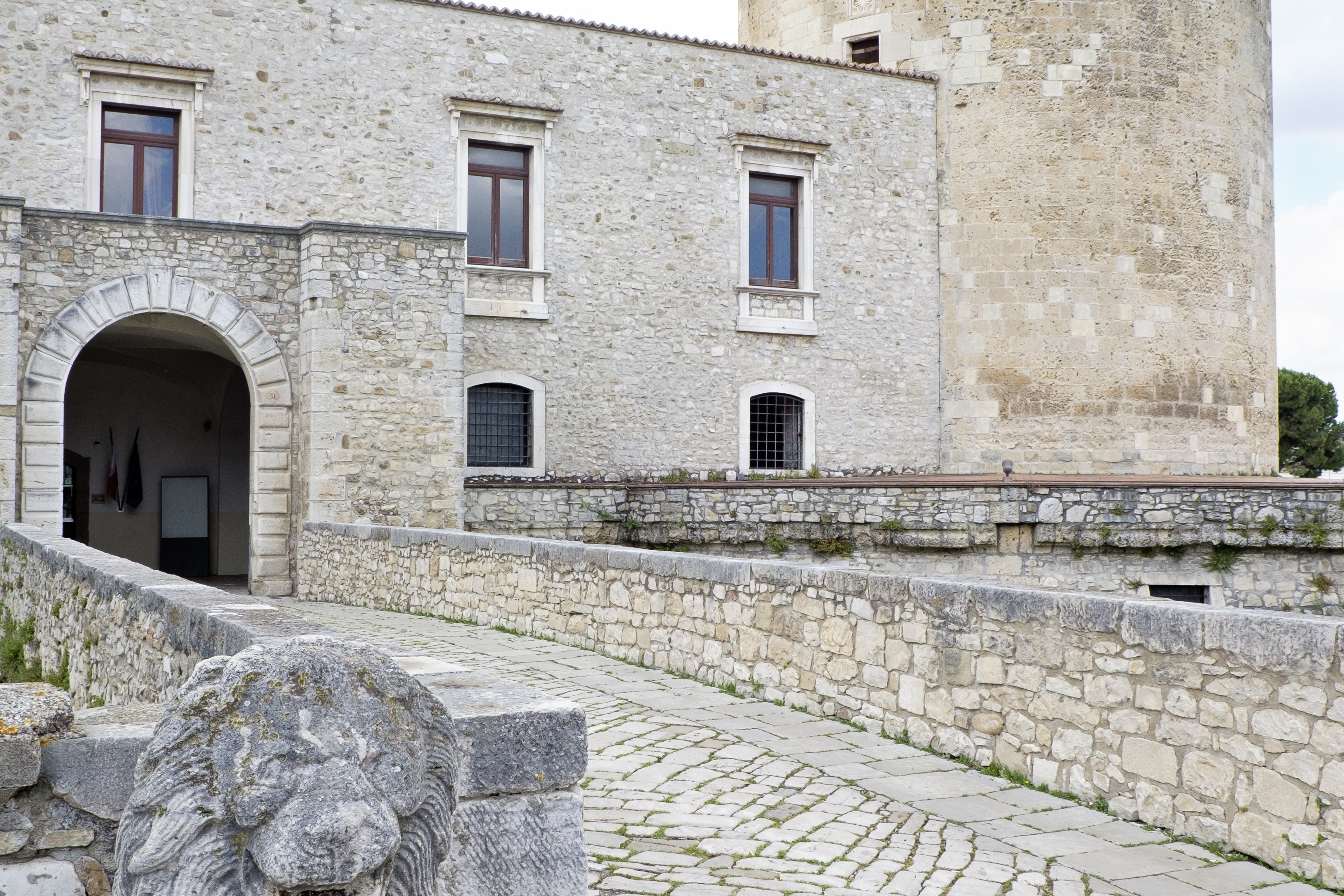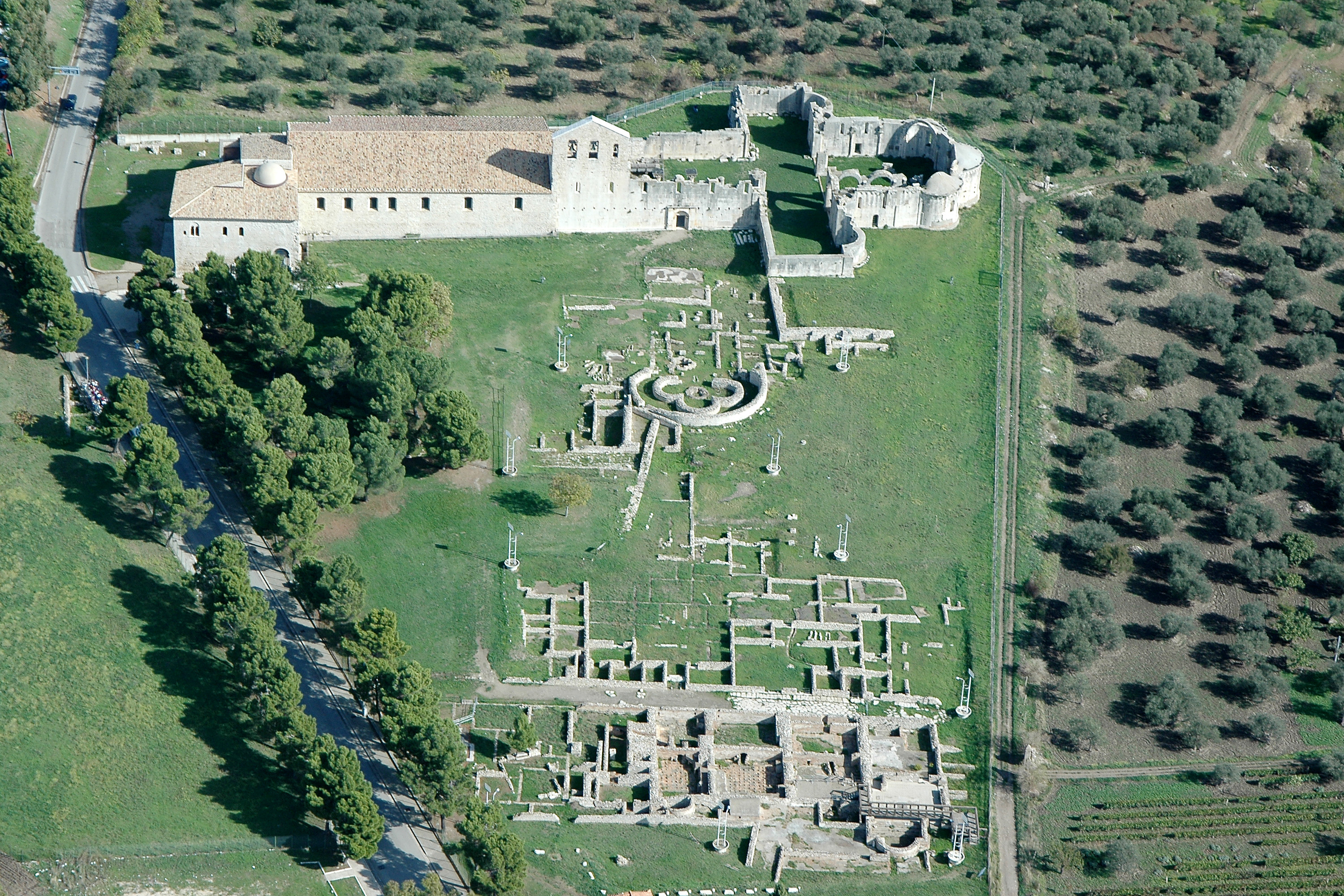A forest of epic proportions, dotted here and there with blue lakes and water courses interspersed among the huge green expanse , which gradually thins out from west to east giving way to more gentle, multi-coloured hills laden with vineyards (the region is home to Aglianico DOCG, the king of Basilicata wines), arable crops, olive groves and orchards. This is an aerial view of Vulture Melfese area in the region’s north eastern part, a chest of incredible natural and artistic treasures. Treasures that provide fairy-tale views of enchanted beech, turkey oak, horse chestnut, maple and holm oak forests that burst into life in autumn in an explosion of red, yellow and orange. There are pretty lakes nestled in dense vegetation such as the dormant Mount Vulture (1326 mt) aroud which steep, wooded slopes stretch across land made highly fertile by prehistoric lava flows. There are also mediaeval villages, prehistoric settlements and extraordinarly rich archaeological sites as well as castles, monasteries and fantastic cathedrals cloaked in an air of mistery, completed by stories about legendary figures who contributed to making this corner of Basilicata one of the most fascinating and flourishing parts of the region. Kings and queens, popes and hordes of devouts, knights, poets and scholars, princes and musicians, military commanders, and even brigands who found a safe haven in the inpenetrable forests. Due to its strategic position, this is a land of battles and conquests. The Daunians, Samnites, Romans, Longobards and the Byzantines, together with the Swabians, the Angevins and the Aragonese left thein mark on a land of arcane charm that even bewitched Frederick II of Swabia. Among the most interesting cities of this part of Basilicata we must mention Venosa, one of the region’s masterpieces of architecture and urban design featured in the list of Italy’s most beautiful towns which is a major and longstanding Lucanian artistic and cultural centre. The birthplace of the great latin poet Horace, who was born here in 65 B.C., and other eminent figures including Prince Carlo Gesualdo da Venosa (born here in 1566) who was an unparalleled composer of madrigals and one of the most famous musician of his time. The ancient Venusia, set in fertile, rolling hills dotted with vineyards, olive groves and orchards was founded by the Romans although it was inhabited by the Samnite people as early as 291 B.C.
Jewish Catacombs
The ancient Jewish catacombs, with inscriptions in Hebrew, Greek and Latin, show the importance of the Jewish population here in the 4th and 5th centuries after Christ.
Archaeological Park of Venosa
The Archaeological Park is situated at the north eastern edge of Venosa and contains the ruins of a Roman settlement, including an amphitheatre and thermal baths. For those interested in history both places are essential to your Basilicata itinerary.
Castello di Pirro del Balzo
One of the many attractions in Venosa is the Castle of Pirro del Balzo, named after the Duke who constructed it upon the ruins of an ancient cathedral. The castle was built in several stages; the first towers and the building were placed in the 1400s, while further construction took place during the 16th and 18th centuries.Today part of the castle houses the National Archaeological Museum, where archaeological finds from pre-Roman times to the Norman period are stored. Nearby lie the Fontana Angioina (Angevin Fountain) from 1298, and the Chiesa del Purgatorio, a church built in the Baroque style during the sixteenth century, both are worth a visit.
The House of Horace
For those interested in the renowned Roman poet, Horace, this Roman building has been named for him and is a point of interest.Venosa also contains a statue of the poet, thought to have been erected in the late 18th century.
Abbazia della SS.Trinità (Abbey of SS.Trinity)
The Abbey of SS.Trinity is the largest monastery complex in Basilicata. It contains the Chiesa Vecchia (the Old Church), from paleo-Christian times, and the Chiesa Nuova (the New Church). In the abbey there are frescos and mosaics from different eras on display. The Holy Trinity Church contains the tomb of the Norman crusader, Robert Guiscard, as well as more handsome frescos and mosaics. The beautiful Incompiuta, literally meaning the Unfinished, is a church which was never completed. The continuity between the perfectly finished old church and the Incompiuta creates a striking transition from the physical to the metaphysical, from the finite to the infinite.


















